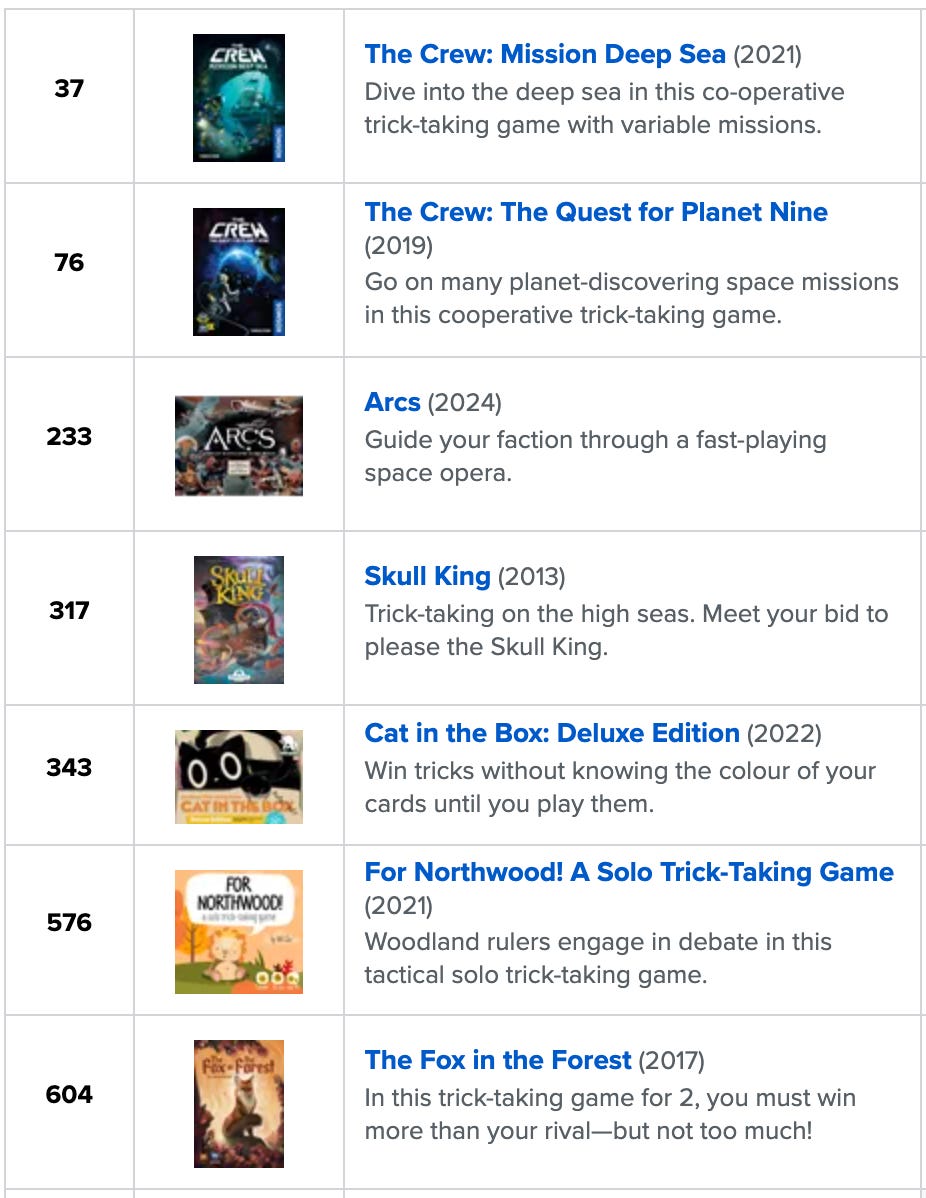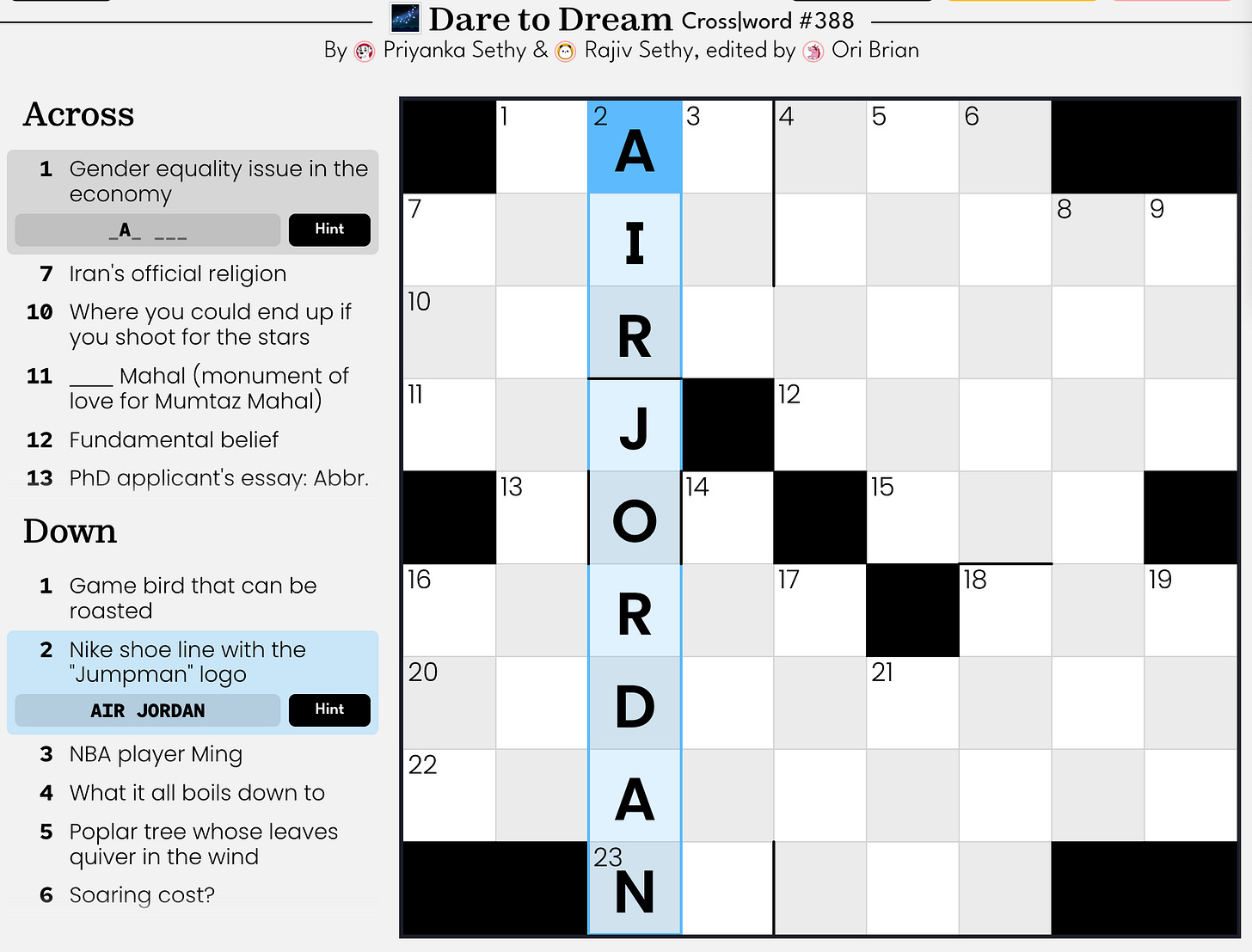Pop Game Design is changing the way we play
Looking at the best 5 daily games, and how auteur game design isn't just for niche indies, hobbyist board games, or Triple-A video games. It's for everyone!
For as long as I can remember the concept of “being a gamer” has been deeply connected to the idea of “nerd culture”. If you played games you likely loved Star Wars, Lord of the Rings, or Fantasy and Sci-fi.
Sure, lots of people play classic games like Chess, Cribbage, and Checkers. And lots of families own a copy of Monopoly, somewhere. But if you talked about loving a game designed by a designer it meant you were probably pretty invested in fantasy culture generally.1
This has been slowly changing. Friends and family are more willing to try a wider variety of games as the complexity has gotten better and better. And the number of people who have told me they’ve enjoyed games like Terraforming Mars or Spirit Island continues to astound. But the game that blew the door open and portended a sea change in how we think about designed games was Wordle.
5. Wordle (NYT Games)
Wordle is a brilliant piece of design. It’s a puzzle game that feels designed to help you get to the answer and makes you feel smart while doing it.
I’m not particularly opposed to the word “Gamer”. We use the word reader all the time in plane English. But the word gamer has gotten so overloaded that it’s impossible to distinguish the definition “someone who is playing a game” and “someone who has made gaming their identity”. What’s rare about Wordle is lots of people play Wordle all the time without being “Wordle” people.
Even compared to other historical style daily games like Sudoku or Crossword this is pretty new. Wordle is something you play and then move on with your day. From a design perspective, it’s also a departure from Sudoku or Crossword because the game isn’t about trying to unlock the mind of the person constructing the puzzle. Wordle is a system designed to explore your knowledge about how words are constructed.
You Might Also Like: Fibble (if you’re looking for Wordle with a bit of a twist)
4. Pile Up Poker
At the same time as the Wordle craze caught on, another trend has been gaining traction: integrating classic games into modern designs. The board gaming industry has been going through this with trick takers, twisting the rules of Hearts into a variety of different themed experiences for players to enjoy.

Pile Up Poker is a game about creating poker(ish) hands on a 4x4 grid. You’re trying to create 10 possible hands (each column, row, the corners, and if you’re lucky your discard pile). It captures the vibe of making poker hands and distills it into a game you can play in under 5 minutes.
Pile Up creates a poker like atmosphere by challenging players to lay cards in hands. Each “turn” you are given 5 cards in a hand and you have to play 4 of them in various positions that you think will lead to the highest number of points. At the end of the game you’ll score various points for how high each valid hand you’ve made plus a multiplier for the total number of hands. Hitting a high score with 10 hands feels incredible, but going lower doesn’t feel like failure because of the randomness.
You Might Also Like: Balatro (though be warned, if you start playing Balatro, you might not stop)
3. Flipart (Puzzmo)
Flipart feels like if someone decided to make a paint by numbers puzzle out of rotations. I love how this game feels like you could absolutely brute force it or beat it by accident, but trying to figure out how to beat it quickly or in the fewest rotations still feels like a genuine feat.
Flipart feels impossibly special because how could you find a game in something so simple. It consists solely of turning small blocks, hits the goal of filling in a square, and is completable in under a minute, but feels meaningful enough to be worth doing regularly.
2. Spelling Bee (NYT Games)
Spelling Bee feels like a descent into ethereal madness. It’s so old school but it manages to hold its own against other more modern titles. It doesn’t have the bells or whistles of some of the newer games, but it makes up for that with an incredible premise and a tight gameplay loop.
Careful restrictions are what turn this from a simple word jumble into a mind bending masterclass. I also love how “going deeper” in Spelling Bee isn’t about statistically optimizing letters to pick towards a smaller set of options, but about understanding the expansiveness of word construction and even learning new vocabulary.
1. Cross|word (Puzzmo)
I spent the last ten minutes explaining how crosswords aren’t pop games but here I am putting a crossword puzzle at the top of the list. What gives? What’s so lovely about Cross|word is how each puzzle feels uniquely set by its constructor, but the system. The size of the puzzles, the unique breaking structure to make it clear where words (or acronyms) begin and end, the hint system that helps you contain a puzzle within a puzzle.
Cross|word provides the necessary hand holds for me to be successful but not so many that it feels like success is trivial or pre-ordained. It makes it hard to get lost, easy to bounce around, and asks me for the level of difficulty that I would like to play at. I also appreciate that it feels correctly sized between the Mini and the large (sometimes called the Midi), to where it’s not an absolute commitment to get through, even as the challenge ramps up through the week.
Pop Games are the Future
I sincerely doubt the pop game revolution, or the daily games that power it, is going to slow down anytime soon. Puzzmo recently announced a new game in partnership with Seth Godin, Bongo, and I doubt Tango will be the last new game to come out of the LinkedIn experience. The biggest question moving forward is what platforms will add new daily game experiences, and how will existing platforms change and adjust as the volume of games increases? It’s easy enough to quickly knock out 4 LinkedIn games before the work day, but what happens when there are 8, or even 10? Will platforms start to archive older games or rotate them? Will the designs continue to feel handcrafted as they proliferate, or will newer entrants aim for more basic concepts?
It will be an exciting time to see what happens next!
This is also different than the Candy Crush style games that are very much games, but have different aesthetics and goals. They are games designed to be played while you’re doing something else.







